
How to Write a Great Social Media Manager Job Description (and Hire a Top Social Media Manager)

Product Marketing @ Buffer
Writing a great social media manager job description is not an easy task.
The job description is one of the first few things potential applicants read and a well-written job description can increase the chances of you hiring the best social media manager for your company.
We’re thrilled that you’re looking to hire a new social media manager and would love to help you as much as we can!
Try Buffer for free
180,000+ creators, small businesses, and marketers use Buffer to grow their audiences every month.
Here’s everything you need to know about writing a great social media manager job description (and more).
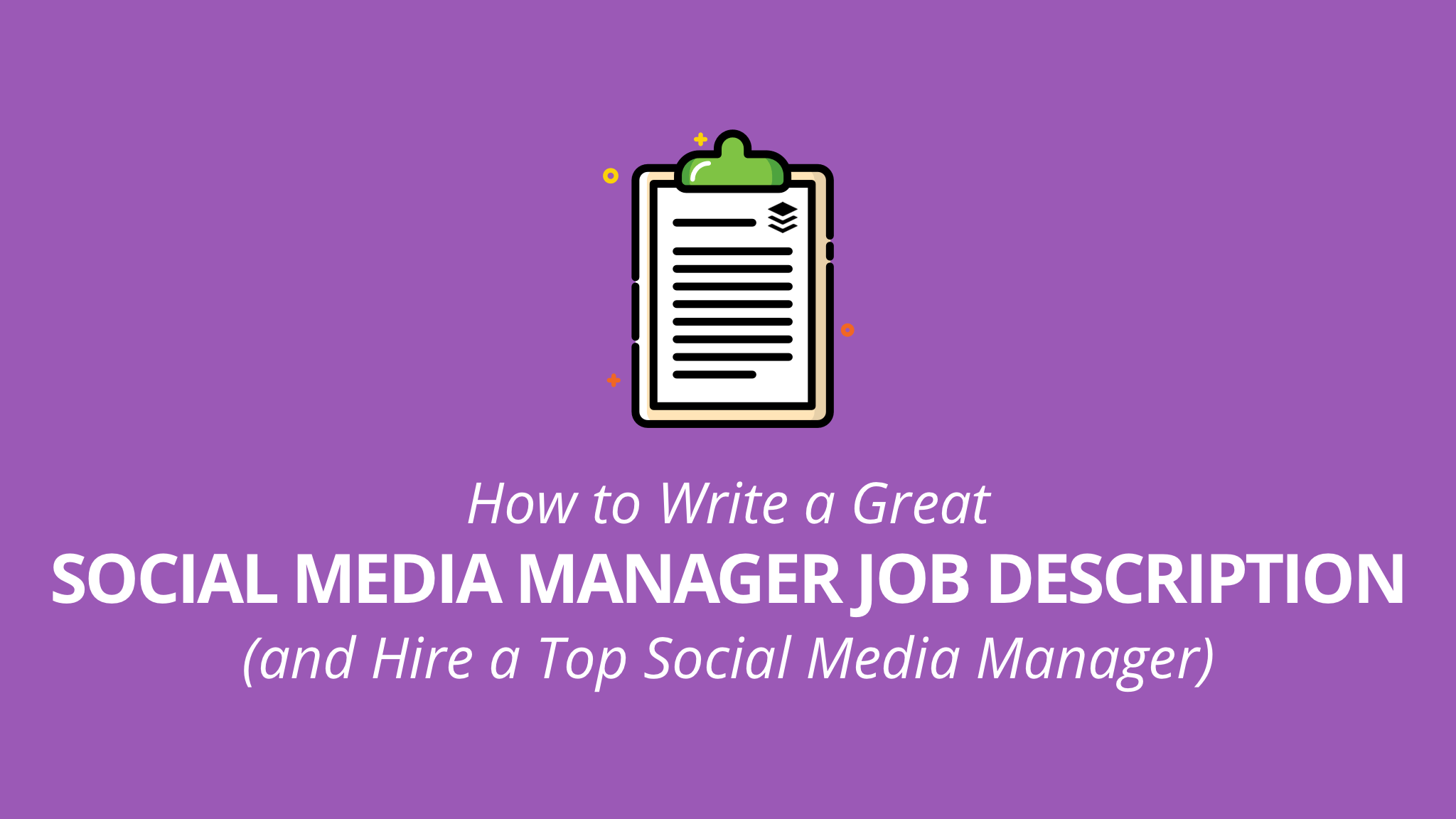
How to write a great social media manager job description (and hire a top social media manager)
There’s a lot that goes into writing a great job description, and we hope to cover everything you want to know. If we’re missing any information, feel free to ask your questions in the comments section below.
Here’s what we hope you’ll learn from this guide:
- What to include in the job description
- Examples of Social Media Manager Job Descriptions
- Tips, Templates, and Tools for Perfecting Your Job Description
- Job Boards for Posting Your Job Description
- Bonus: Our Favorite Interview Questions

Let your whole team contribute to your social media success with Buffer. Kickstart a free trial now.

What to include in the job description
A detailed job description helps you and the candidates set the right expectations about the role. So what should go into your job description?
Here’re the common key sections of a job description:
- About Your Company or Team
- General Information (Title, direct reports, and location.)
- Job Purpose or Scope
- Responsibilities and Accountabilities
- Key Performance Indicators (KPIs)
- Requirements or Challenge
- Expected Salary
- Perks and Benefits
(Hat-tip to Digital Marketer who has shared a great job description in their post on hiring a marketing team, which I referred to for this post.)

1. About Your Company or Team
This section is a brief introduction of your company or team. This is helpful especially if you intend to list the job description on external job boards where potential applicants might not know your company.
Some of the things you can include in this section are: what your company does, how it’s like working at your company, what your company culture is like, and what your company values are.
Here’s how Airbnb describes itself in their social marketing manager job listing:
Airbnb is the world’s largest community-driven hospitality company. Every day, we connect thousands of guests and hosts online, leading to meaningful travel experiences in the real world. From treehouses to castles, Airbnb gives access to the most interesting places to stay around the world, putting you in the local scene and connecting you with unforgettable characters that become part of your story. Travel inspires the some of our best and most memorable stories, and travel with Airbnb facilitates even more interesting experiences and stories that are worth sharing.
While it’s possible that applicants already know your company, this is a great opportunity to promote your company and entice them to want to work with you.
What are the unique characteristics of your company that will get your applicants excited about working with you? Is it your great company culture and team? Or amazing growth and investor support?
2. General Information
This section contains general information about the role such as the title, the team lead that they would report to, any direct reports, and location of the job.
Title
The title is a fun one to think about. Depending on your company culture, it can be as straightforward as “Social Media Manager” or as creative as “Social Media Ninja”.
I’d recommend keeping the title straightforward as it can help set clear expectations for the role. A creative title is perfectly great, too, as long as you have a clear job description.
Social Media Today has written a fun article on three groups of common social media job titles — Traditional, Modern, and Hyper-Modern. If you are stuck with naming the title, you might find the article helpful.

Team Lead and Reports
If the new social media manager will be reporting to a team lead or will be managing a team, it’ll help to mention the title of the team lead or the roles on the team respectively.
I personally think that adding the name of the team lead or the team members will add a nice personal touch to the job description. Also, if the team lead or any of the team members are well-known in the industry, it can help to make the job even more desirable.
Location
Will the new social media manager work in your office? Or can she work remotely? Or perhaps a mix of both?
The location can matter a lot to applicants, especially if they have to move their families. If the new social media manager has to relocate to where your company is based, will the company sponsor the relocation or help in any way?
Being clear about this helps people decide if they’d want to apply in the first place. It can save both the applicant’s and your time when people who don’t want to relocate and wouldn’t be able to work remotely, don’t apply.
3. Job Purpose or Scope
This section gives the applicants a high-level view of the job. Usually, it’s tricky to list all the responsibilities of the role, especially when the list could change over time. Having a high-level description of the role helps applicants understand what’s generally expected of a person in the role.
Here’s an example from Slack:
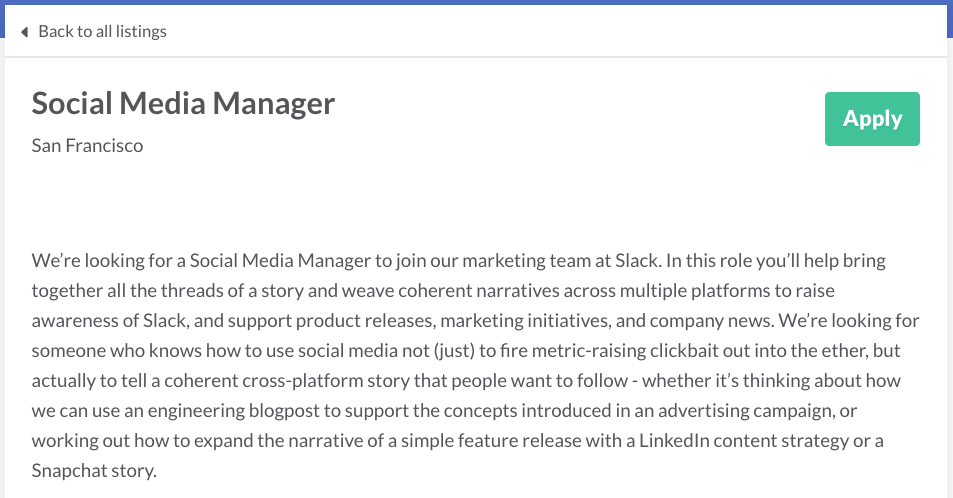
The idea here is not to be too specific about the role such as mentioning all the day-to-day tasks (such details will be covered in the next section).
4. Responsibilities and Accountabilities
This section is where you’d want to be more specific about the requirements of the job. While you might not be able to list all the tasks for the job, this section will give the applicants a sense of what they’d do in the role on a day-to-day basis and what skill sets you’re looking for.
Here’s a snippet from our social media manager listing when we were hiring:
Here is a breakdown of where we’d love some of your expertise to help us improve:
- Create, schedule, and analyze all the social media updates that are sent to the Buffer social media profiles
- Create paid marketing campaigns on social to help us reach more customers and interested people in improving their social media strategy
- Embody the Buffer voice and tone in every tweet, update, and conversation
- Be data-informed about what’s working on social and what’s not
- Experiment with new growth strategies and ideas
- Help us explore new social media networks, apps, and tools
- Work together with the crafter team to share insight and strategies on the Social blog
As you might have noticed, the responsibilities of the role all start with an action verb as they are meant to be actionable. The Human Resource department of the University of Pittsburgh has come up with a great list of action verbs you can use in your job description.
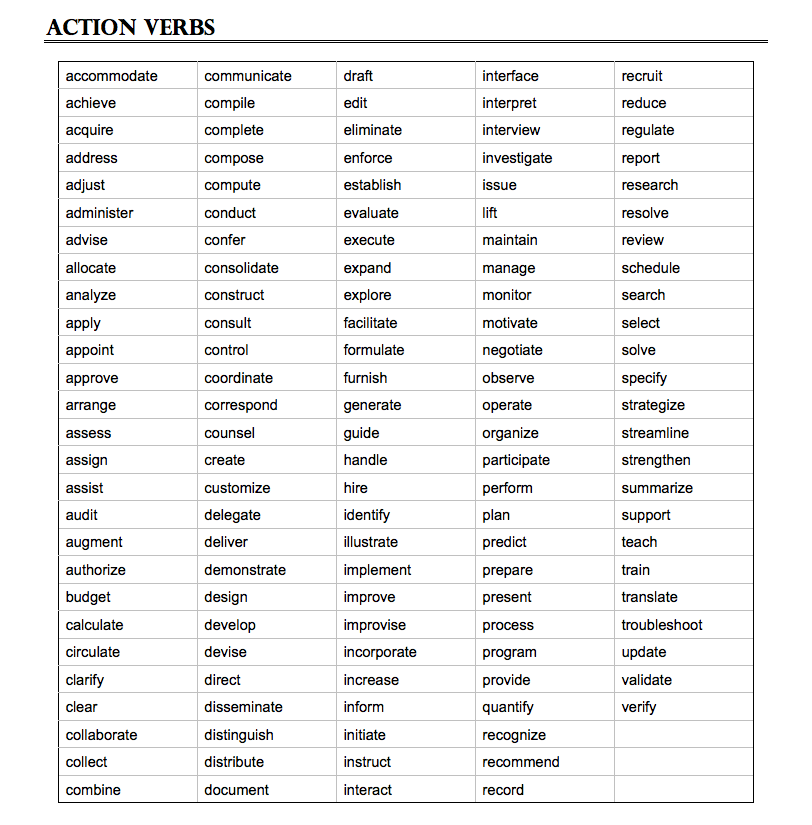
5. Key Performance Indicators (KPIs)
This section goes another level deeper than the responsibilities section as you’d state the metrics the new social media manager will be responsible for. While I don’t see many job descriptions with such a section, I can see how it will bring extra clarity to the job description for applicants.
Depending on your management style or if you are higher for a senior position, you might prefer the new social media manager to come up with her own KPIs, instead.
If you intend to list KPIs in the job description, we’d love to help you brainstorm some potential ones to use. Here’s a big list of 61 social media metrics and their definitions for your reference.
6. Requirements
Requirements are helpful when you are hiring for a mid to senior level position and would like to encourage only people with a certain level of experience and skills, to apply. It will send a clear signal to potential applicants that you are hiring for a senior position.
For example, for its Executive Social Media Manager position, Oculus stated minimum and preferred qualifications:
Minimum Qualification
- 4+ years of experience in social media, journalism, communications or marketing industries.
- Prior experience leading high-profile social programs
- Knowledge of social media platforms.
- Experience working cross-functionally with all levels and departments of an organization.
- Experience managing creative and communications agencies and contractors.
Preferred Qualifications
- A background in technology and consumer products.
- Experience working with or in support of diverse communities
When hiring for senior positions, companies would often state a minimum number of years of experience in the related fields. I believe this might be used as an indication of how senior the position is.
In this section, you could also ask for examples from the applicants’ past experiences that they think might show they have met your requirements.
7. Expected Salary
A study by Smart Recruit Online, a recruitment software company found that “companies see an increase in candidates by 30 percent if they include wage information in their job ads”. This can be a good reason to state the expected salary on the job description.
That said, you don’t have to state the exact salary. Including a salary band, such as $65,000 to $90,000, is quite a common practice. You could research on websites such as PayScale and Glassdoor to find out a rough salary range.
For example, after you search for the role on PayScale, you can add your city, preferred experience level, and even the skills you’re looking for. PayScale will provide the average salary and the range of salaries according to your specifications.
Here’s the salary data for an entry-level social media manager in San Francisco:
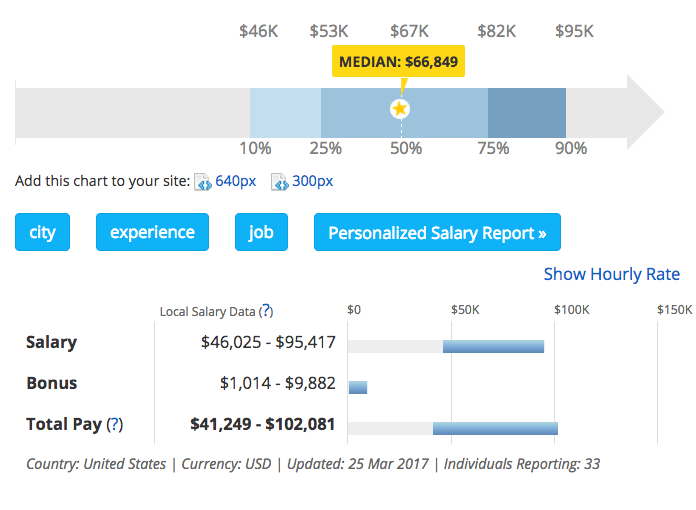
8. Perks and Benefits
Finally, you might also want to include the perks and benefits of the role. Having them on your job description works great if you are intending to list your job description on external job boards.
Here’s a list of possible perks and benefits:
- Equity (usually for startups)
- Company retreats
- Paid leave, off days, and sick days
- Paid maternity and paternity leave
- Paid sabbatical and volunteer time off
- Healthcare insurance
- Education stipend
- Free food and entertainment
- Shuttle service

Examples of social media manager job descriptions
There are many different ways of writing a great job description. What I’ve described above is just one of the ways. While I’ve listed eight sections above, most job descriptions don’t have all eight parts or are structured differently. For example, at Buffer, the key sections we had are:
- What we’re looking for
- What we value
- Where you’ll work
- Perks and Benefits (including salary)
To give you a few examples to refer to, here’re a few social media manager job descriptions from a few of my favorite companies:
- Buffer: Social Media Manager (old listing)
- Oculus: Executive Social Media Manager
From my research, I noticed that Monster has many job listings for the social media manager role. Feel free to check it out here if you’d love to refer to more job listings.

Tips, templates, and tools for perfecting your job description
Knowing what to include in your job description is a great first step. The next step is to knowing how to make it great.
Fortunately, there are many great resources and tools that can help you succeed in creating your best social media manager job description. We’ve curated several tips, templates, and tools for you.
Tip 1: Create an exciting opening paragraph
Smart Recruit Online wrote a great list of 10 tips to maximize your recruitment results. Here’re some of the ones related to writing a great job description:
- Create an exciting opening paragraph
- Always include a salary banding
- Use the correct terms for job titles
- Optimise keywords for SEO
- Sell the company & opportunity
Tip 2: Be conscious of diversity
I like Help Scout’s suggestions for a job description (even though they were written in a hiring guide for a customer service team). If you are keen to learn more, the guide goes on to elaborate each of the points.
- Be thoughtful about your title
- Don’t be a bore
- Focus on the most important skills
- Be true to the voice of your company
- Be conscious of diversity
- Don’t be afraid to brag
Tip 3: Honesty is the best policy
It can be tempting to over-promise in your job description to attract more applicants. A blog post from Hired, a job search marketplace, recommends being honest with the job description.
There’s a very fine line between pushing a sales pitch and highlighting the best features of your company to a potential hire. The more experienced candidates can easily detect when someone’s trying to sweet talk them into a deal, so make sure to paint an accurate picture of how your company functions and the responsibilities they will be taking on. Although making a positive impression is a priority, be candid around the growth areas your team may be experiencing.
Templates
A good way to go about creating your social media manager job description is to work off a template and adjust it according to your needs. Here’re four generic ones for your reference:
- Social Media Manager Job Description (by Workable)
- Social Media Specialist Job Description (by Workable)
- 12 Marketing Job Descriptions to Recruit and Hire an All-Star Team [Free Templates] (by HubSpot)
- Social Media Executive Job Description Sample (by Monster)
If you prefer referring to actual social media manager job descriptions, I found that Monster has quite an extensive list.
Tools: Textio and others
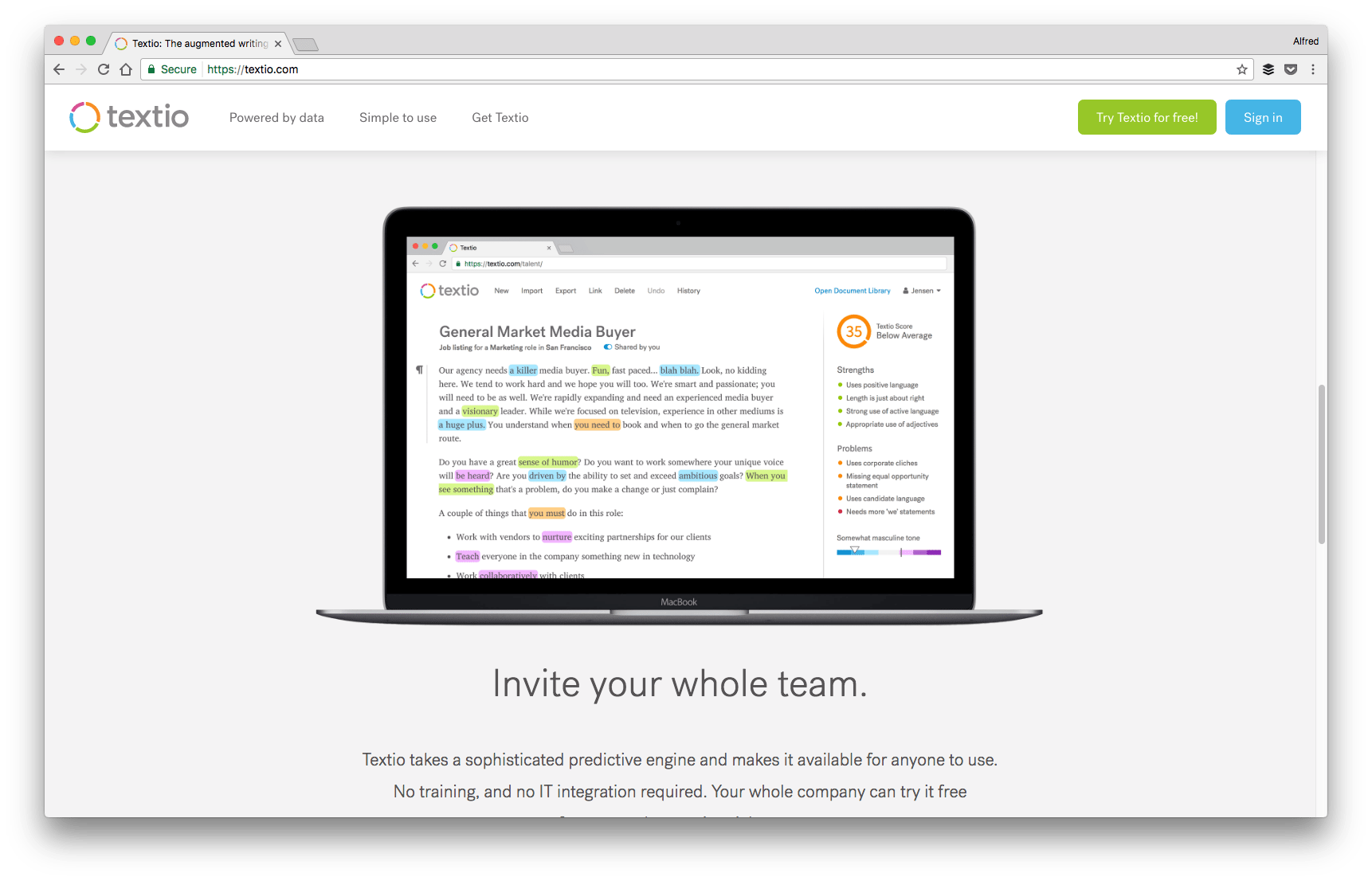
Textio is a writing platform built specifically for creating highly effective job descriptions. It analyzes over 10 million job posts and their hiring outcomes to predict the performance of your job description and provide you with suggestions to improve it.
Other options: Alex, FoxType, and Grammarly

Job boards for posting your job description
Once you’ve written up your job description (well done!), you might choose to list it on your company’s career page and/or post it to external job boards.
If you’d like to spread your job post far and wide, here’re several job boards to consider.
All-in-One: Glassdoor
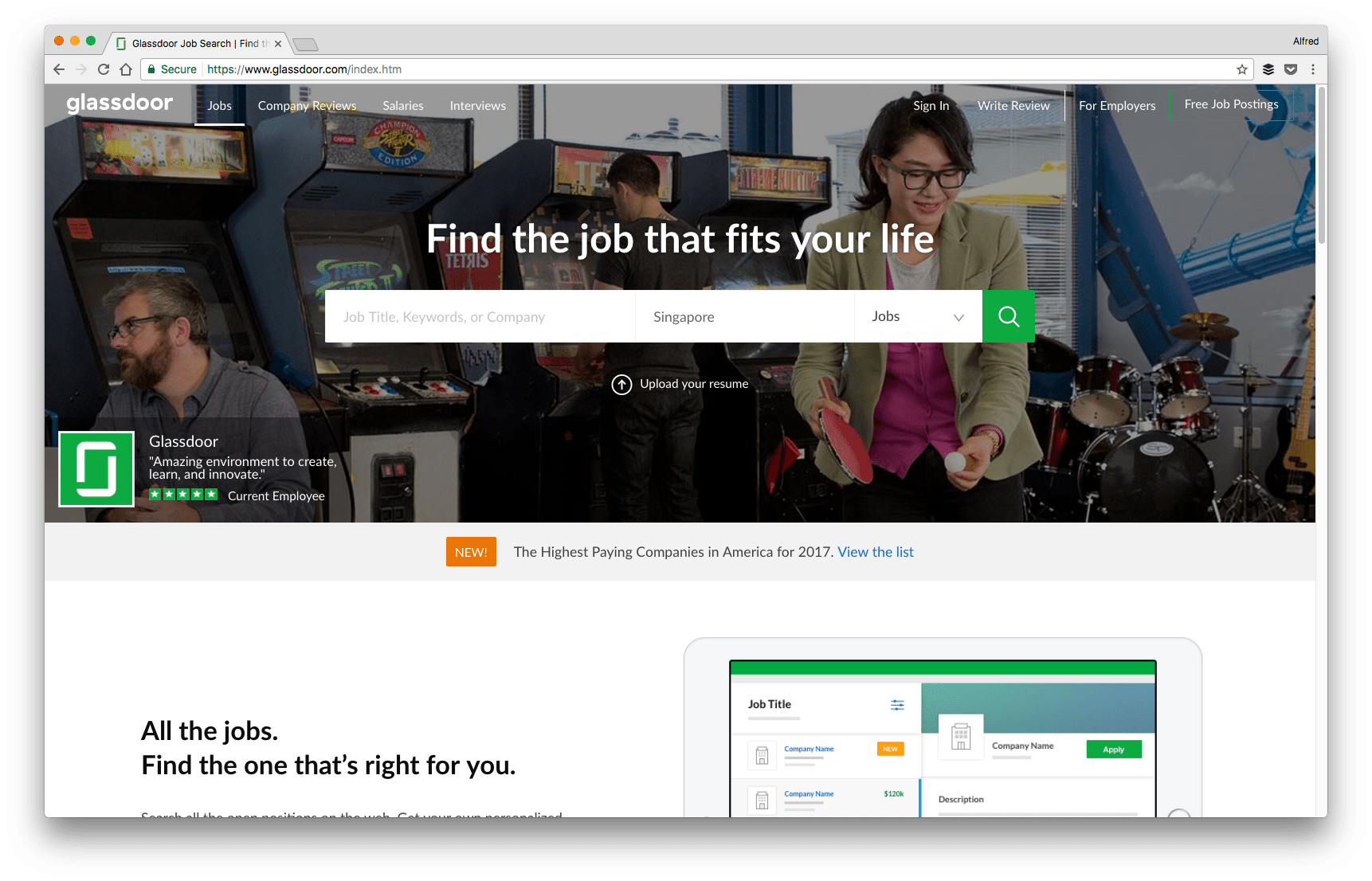
Glassdoor not only allows you to post your job descriptions on their platform but also provides reviews of your company which can be a great way to attract the right talents. It also provides salary estimates based on the job title and location to help you set the appropriate salary.
Other options: Hired, Indeed, and Monster
Remote: Remotive
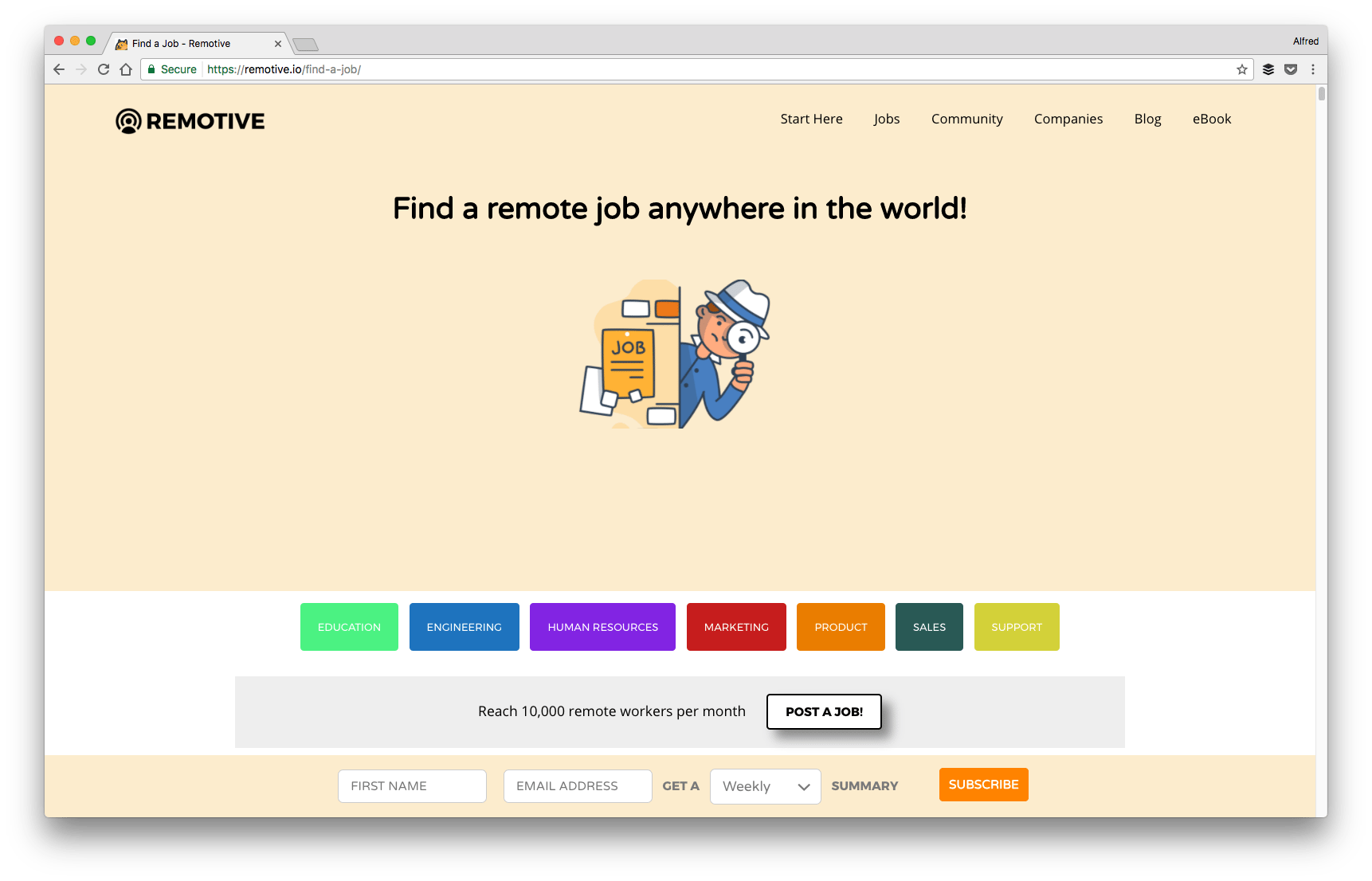
Remotive is a community of more than 25,000 remote workers, which makes it a great place if you are looking to hire a remote social media manager. It has a job board of handpicked remote startup jobs. Jobs listed on the Remotive job board get an average of more than 300 clicks per month.
Other options: Remote OK, We Work Remotely, and Remote.co
Tech startups: AngelList
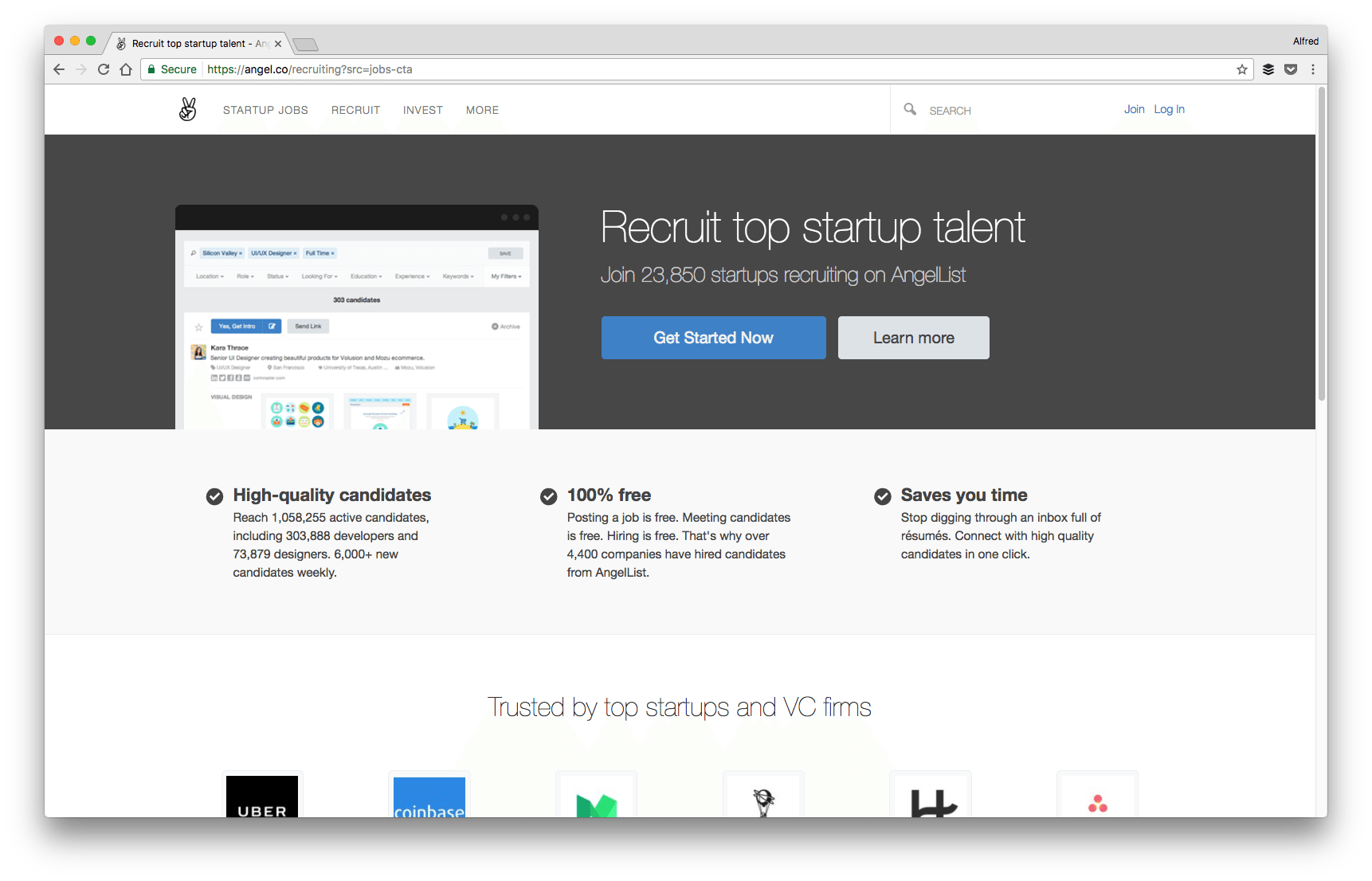
AngelList is one of the more popular startup job boards, with more than one million people actively looking for a new job. Posting a job on and hiring through AngelList is currently free!
Other options: Unicorn Hunt, Mashable, and TechCrunch’s Crunchboard
Social Media: LinkedIn
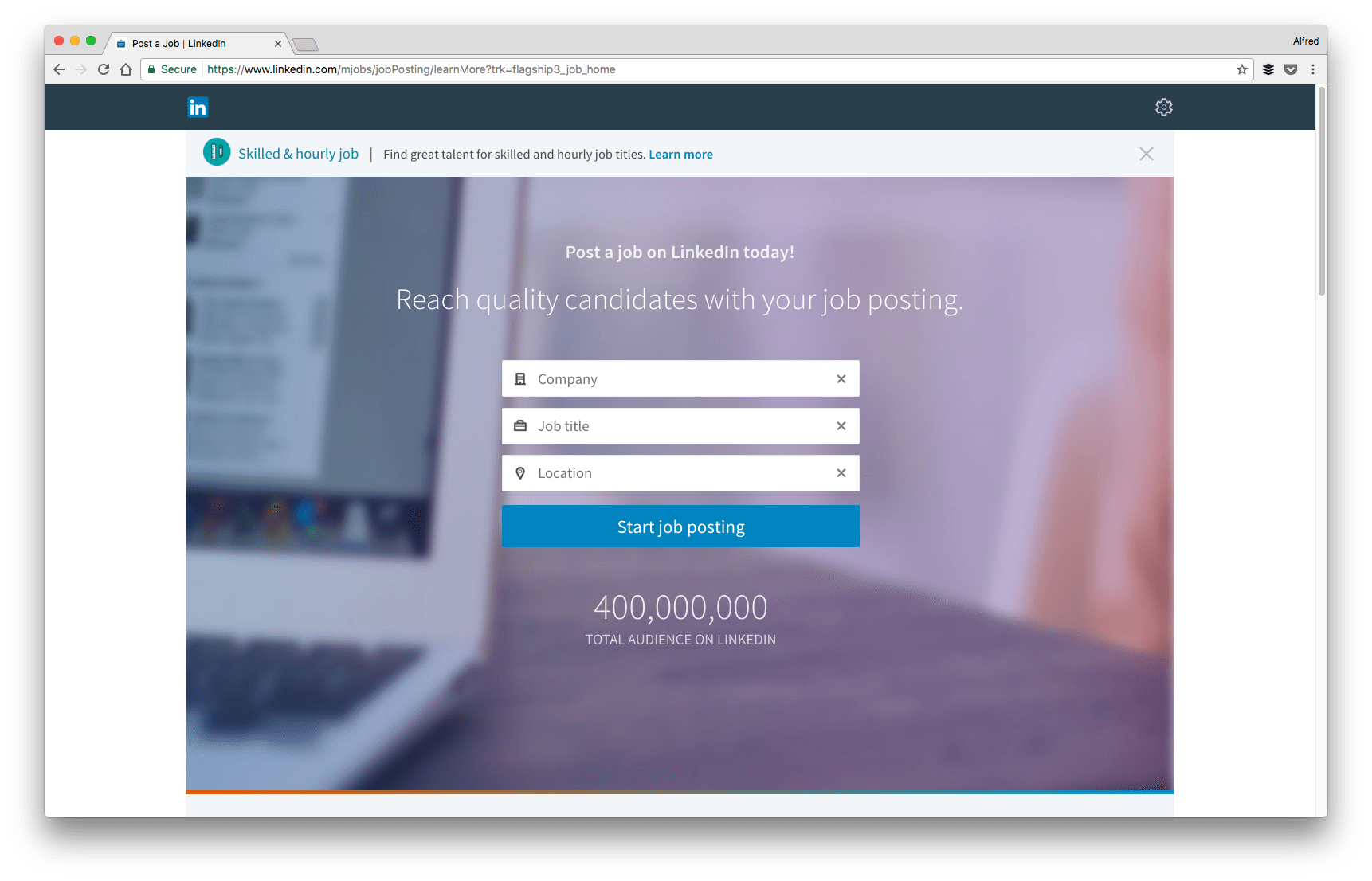
Social media sites like LinkedIn can be a great option for listing your job posts, too. When you list a job post on LinkedIn, LinkedIn would show it to professionals whose skills and experience match your requirements, based on the data LinkedIn has.
Other options: Jobs on Facebook or in relevant, niche Facebook Groups; we used to tweet our job posts, too.

Bonus: Our favorite interview questions
Once you list your job descriptions on job boards, you will soon get applications streaming in – yay! One of the next steps could be to set up an interview with the applicants.
Conducting a job interview can be quite daunting for the first few times. Something I’d worry about is if I had asked the right questions.
In case it’s helpful, here’re some of our favorite interview questions at Buffer:
“Tell me about a successful project you’ve done and were excited about the results.”
Their answer will show their level of ownership of a project, and how they talk about the results — was it a success for them because of the quality of the finished product or the results of the finished product? — this speaks to how much they are data/impact-minded.
“What has fascinated you in the last year? And how did you go about satisfying your curiosity?”
Hat-tip to Carol Meyers, CMO of Rapid7, who shared this question during her GrowthHackers AMA. The candidate’s answer here might give us a hint if they have the qualities we are looking for.
“If you had a $1,500 per month budget to spend on advertising, what would you spend it on?”
Their answer will give us a sense of how they would own and manage the paid channel if the ownership was given to them. The way they break down the budget might also show how analytical they are.
“What are some trends you notice in social media that are important for Buffer to be a part of?”
“What are some specific steps you would take to improve the social media at Buffer?”
“Given this tweet (example provided), what would you do to increase the number of RTs, Like, and Clicks?”
The answers to these three questions will tell us how in tune they are with the social media landscape and how knowledgeable they are about social media marketing.
“What are some of the most inspiration companies you look up to on social media? And why?”
This will give us an understanding of how they view social media and what success on social media is to them.

Other resources you might like
- 10 Important Skills and Traits Your Social Media Manager Will Need in 2017
- How to Build an All-Star Social Media Team in 5 Steps
- How to Get Hired as a Social Media Manager (and Then Rock the Job Once You Have It) — What HubSpot looks for in a social media manager
- A Day in the Life of a Social Media Manager: How to Spend Time on Social Media

Over to you
Creating a job description, and eventually hiring someone, is such a fun process to go through. By knowing what to include in the job description and how to write it well, you can increase the chances of hiring top talents.
We hope the information about has been helpful to you. If you have any unanswered questions, we’d love to see if we can help. Feel free to share your questions in the comments section below.
If you have any tips for writing the perfect job description, it’d be great to hear from you, too!
Try Buffer for free
180,000+ creators, small businesses, and marketers use Buffer to grow their audiences every month.
Related Articles

How to find Instagram Reel trends while they're still hot enough to make an impact, along with some of the best we’ve seen on the platform this year.

TikTok just introduced Bulletin Boards, similar to Instagram's Broadcast Channels. Here's what you need to know.

Video, photos, carousels, or text? We dug into Buffer’s data, analyzing millions of social posts from Instagram, TikTok, LinkedIn, Facebook, Threads, and X to find out which content format performs best.